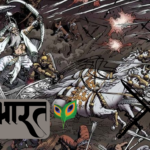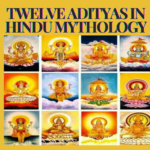Echidna, a creature of Greek mythology, holds a prominent and terrifying place in the pantheon of mythological beings. Known as the “Mother of Monsters,” Echidna’s lineage and attributes intertwine with many of the most fearsome creatures in Greek lore. Echidna herself was often described as half-woman, half-serpent, with a hideous and terrifying form that mirrored her monstrous offspring. Her mythology spans various interpretations, from ancient poets to later mythographers, making her a central figure in the realm of mythological terror.
Origins of Echidna.
The origins of Echidna are murky and varied, with different sources placing her in different genealogies and linking her with a variety of primordial beings. According to Hesiod’s “Theogony,” Echidna was born to the sea gods Phorcys and Ceto, both of whom were known for their monstrous progeny. This association with the sea and its creatures ties Echidna to the chaotic and destructive forces of nature. Other accounts suggest she was born from Gaia (the Earth) and Tartarus (the Underworld), embodying the connection between the earth’s fertile yet dangerous forces and the chthonic realms of death.
In some versions, Echidna is equated with Python, “the Rotting One,” a dragon born from the slime left behind by the Deluge. This portrayal casts Echidna as a being of decay and corruption, her very essence tied to the detritus of the world’s rebirth. Python’s association with rot and stagnation further reinforces Echidna’s role as a symbol of nature’s darker aspects, those of decay and inevitable death.

Echidna and Tartarus.
Echidna’s connection to Tartarus, the deep abyss beneath the earth, is a crucial aspect of her myth. In some accounts, she is referred to as the “Tartarean Lamprey,” a creature that dwells in the darkest, most inaccessible parts of the underworld. This association with Tartarus further emphasizes her role as a bridge between the mortal world and the nether realms, a guardian of the border between life and death.
The pit of Tartarus is described in mythology as a place of eternal torment, where the most wicked of souls are condemned to suffer for their sins. Echidna, with her terrifying form and monstrous offspring, fits perfectly within this landscape of horror and despair. Her very presence in Tartarus suggests a creature beyond redemption, one whose very existence is tied to the punishment and suffering of others.
Monstrous Offspring.
Echidna’s most infamous role in Greek mythology is as the mother of a host of monstrous beings that plagued the world and its heroes. Her union with Typhon, the most fearsome of all monsters, produced a lineage of creatures that would go on to challenge the gods themselves.
Among Echidna’s offspring were:
- Cerberus, the three-headed dog that guarded the gates of the Underworld.
- The Lernaean Hydra, a serpentine creature with many heads that regrew when severed.
- Chimera, a fire-breathing beast with the body of a lion, the head of a goat, and the tail of a serpent.
- Orthrus, a two-headed dog who guarded the cattle of Geryon.
- The Sphinx, a creature with the body of a lion, the wings of an eagle, and the head of a woman.
These creatures were not only fearsome in their physical forms but also posed significant challenges to the greatest heroes of Greek mythology, such as Heracles and Bellerophon. The monstrous nature of Echidna’s children reflects the destructive and chaotic aspects of the natural world, with each creature embodying different fears and dangers faced by humanity.
Echidna’s Legacy in Mythology.
The legacy of Echidna in Greek mythology is not merely as a mother of monsters but as a symbol of the primal forces of chaos and destruction. Her presence in myths serves as a reminder of the dangers that lurk in the world, both seen and unseen. Echidna embodies the wild and untamed aspects of nature, those that defy order and civilization and challenge the gods themselves.
Throughout various mythological accounts, Echidna is depicted as both a formidable adversary and an essential part of the mythological landscape. Her existence provides a counterbalance to the forces of order represented by the gods, serving as a reminder that chaos and destruction are ever-present threats.
Echidna in Later Interpretations.
In later interpretations of Greek mythology, Echidna often takes on a more symbolic role, representing the darker aspects of the natural world and the inevitability of death and decay. Her association with Python and the imagery of rotting sea-scum and salt-marshes highlights her connection to the putrefying forces of nature, those that consume and destroy life.
The Tartarean Lamprey aspect of Echidna also points to her role as a devourer of souls, a being that exists to consume and annihilate. This imagery ties her to the concept of entropy, the gradual decline into disorder that characterizes the natural world.
Disclaimer : While Writing this post have taken some content reference from different blog posts around the web and also chatgpt. If you think I have directly copy paste your content ,please contact me . I assure you that I will remove the content within 24 hours.





